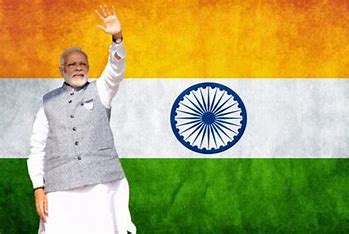Political scientist Joseph S. Nye once said, «Cultural festivals are the new roundtables of international diplomacy where the currency is not power but participation; not politics but shared experiences.» Think about it—in today›s world, sometimes a shared meal or a dance performance can do more for international relations than hours of formal meetings. India finds itself at an interesting crossroads. As it prepares to participate in the SCO Summit in Pakistan this October and the G20 Summit in November, the country faces a unique challenge. How do you balance being the land of vibrant festivals and warm hospitality with the need to stand firm against security threats?
For years, Pakistan has antagonised India, primarily through its support for cross-border terrorism. Diplomatic gestures alone failed to achieve peace. Narendra Modi’s government understood the need for military strength, and India’s responses, including halting bilateral talks and carrying out surgical strikes, sent the right signal. At the time of Dussehra and later Diwali, the symbolism is fitting. Dussehra marks the triumph of good over evil, and Diwali celebrates the victory of light over darkness. Lord Ram, after countless emissaries like Hanuman and Angad failed to convince Ravana, acted decisively to bring victory. Similarly, after years of patience and diplomatic efforts, the Modi government moved decisively, conducting military strikes and forcing Pakistan into a defensive stance.
During the upcoming SCO Summit, External Affairs Minister S. Jaishankar’s decision to attend without engaging in bilateral talks with Pakistan continues this strategy. It underscores India’s refusal to engage with a country that harbours terrorists. Instead, India is using international platforms like the SCO to project its strength and reinforce its commitment to security. This isn’t disengagement; it’s a clear message that cross-border terrorism is a non-negotiable issue. At the same time, India continues to engage globally through its cultural diplomacy, but now with a firm belief of hard power.
India’s assertiveness on the hard-power front has been evident in its dealings with China. First, during the 2017 Doklam standoff, India held its ground and prevented China from constructing a road that would have brought the PLA closer to the Siliguri Corridor, a strategically vital region for India. Then, in the 2020 Galwan Valley clash, Indian soldiers, despite the loss of lives, gave a fitting reply to Chinese aggression, inflicting heavy casualties on the PLA as reported by some international publications.
The most striking military manoeuvre came in August 2020 when Indian troops surprised the Chinese PLA by taking control of the heights of Rezang La and Rechin La on the Kailash Range. Despite valid fears of this move escalating into a full-blown conflict, India’s bold action prevented China from unilaterally altering the status quo at the Line of Actual Control (LAC). Just as the Chinese PLA attempted to enforce its 1959 claim line near Finger 4 in Ladakh, India countered by securing strategic positions on the Kailash Range, aligning with its own perception of the LAC. This demonstrated that India would not be intimidated by military posturing and that its hard power would serve as a critical backup to its diplomatic and cultural engagements.
As Nye pointed out, «Festivals have become diplomatic missions without credentials, ambassadors without portfolios.» The Indian diaspora, spread across the globe, plays a vital role in carrying forward this diplomacy. From Silicon Valley to academia, the diaspora strengthens India›s global image and forges connections that go beyond state-sponsored diplomacy.
The dual approach—balancing soft power with hard power—has allowed the Modi government to elevate India’s global standing. By demonstrating military strength when necessary while valuing cultural exchanges, India ensures that its soft power is taken seriously.
The Indian diaspora remains the true ambassador of India’s soft power. With millions of Indians living and working abroad, they’ve become cultural bridges, sharing Indian values, traditions, and achievements. The contributions of Indian-origin professionals across industries have bolstered India›s reputation as a hub of innovation and talent.
India’s cultural outreach, be it through its diaspora or through its vibrant festivals, gains even more significance because the world sees India as a rising power—not just economically but militarily too. This perception of strength underpins its cultural influence, making India’s soft power all the more potent.
India’s blend of soft and hard power is the key to its growing global success. As our centuries-old festivals teach us, we must never be cowed down by injustice, but stand firm in the face of adversity. The phrase “Hante kau haniyein paapu dosh na giniyein (Strike down evil, but do not count the faults or sins)” reminds us of the timeless wisdom to act decisively without fear. This balance, reflected in India’s dealings with Pakistan and its leadership at global summits, ensures that India’s voice resonates strongly on the world stage, without compromising its security.
The writer is a senior journalist and Head Media IGNCA).

